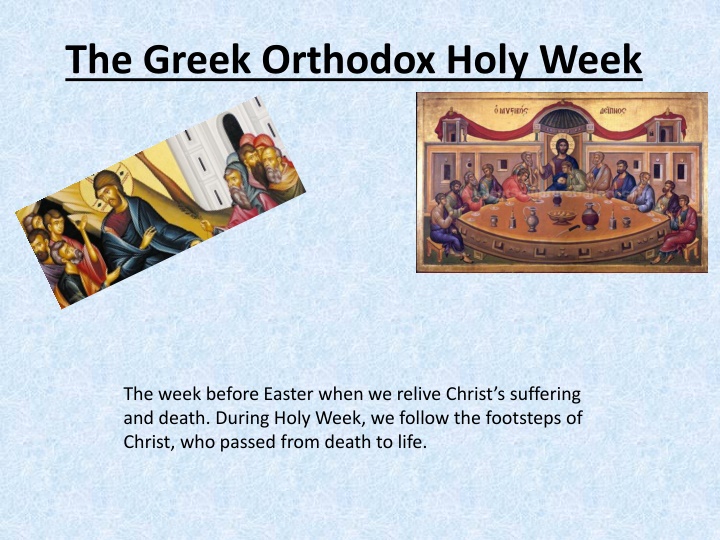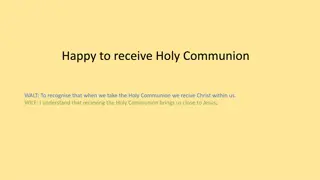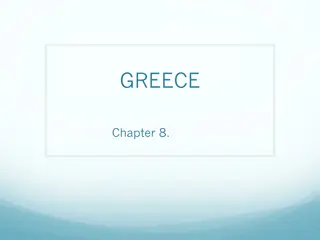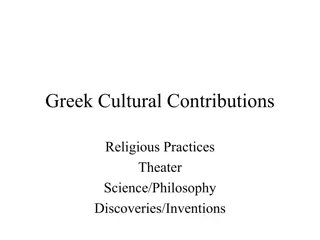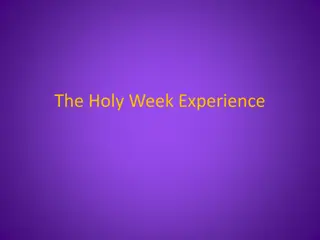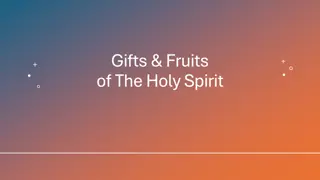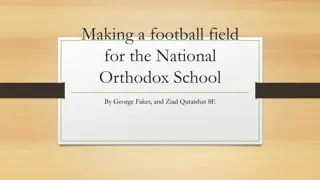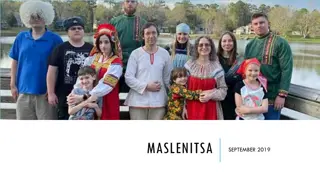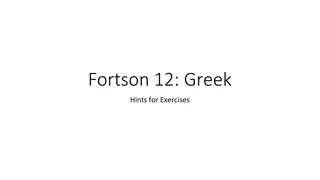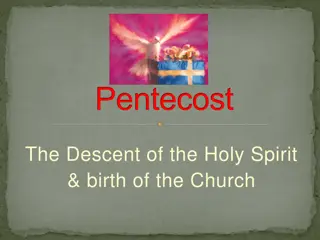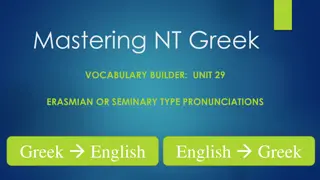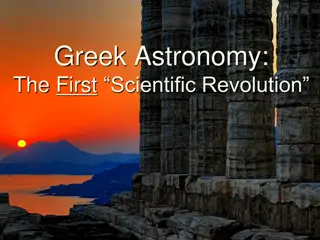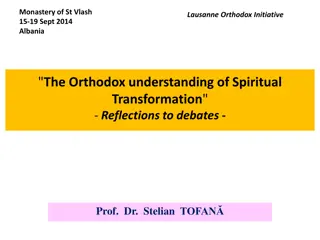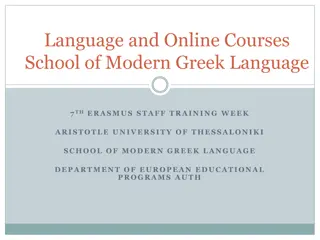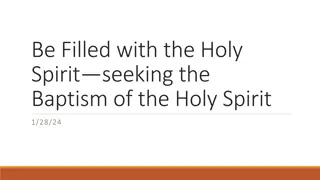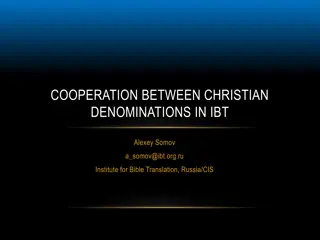A Journey Through the Greek Orthodox Holy Week
The Greek Orthodox Holy Week, a time of deep spiritual significance, encompasses events like Lazarus Saturday, Palm Sunday, Holy Monday, Holy Tuesday, Holy Wednesday, and Holy Thursday, leading up to Easter. Each day holds symbolic rituals and teachings that reflect on Christ's suffering, death, and resurrection. Through these commemorations, believers are invited to reflect, repent, and prepare their hearts for the Easter celebration.
Download Presentation

Please find below an Image/Link to download the presentation.
The content on the website is provided AS IS for your information and personal use only. It may not be sold, licensed, or shared on other websites without obtaining consent from the author.If you encounter any issues during the download, it is possible that the publisher has removed the file from their server.
You are allowed to download the files provided on this website for personal or commercial use, subject to the condition that they are used lawfully. All files are the property of their respective owners.
The content on the website is provided AS IS for your information and personal use only. It may not be sold, licensed, or shared on other websites without obtaining consent from the author.
E N D
Presentation Transcript
The Greek Orthodox Holy Week The week before Easter when we relive Christ s suffering and death. During Holy Week, we follow the footsteps of Christ, who passed from death to life.
Lazarus Saturday Lazarus, a friend of Jesus, had been dead for 4 days when Jesus went to the tomb where he was buried. Jesus said, I am the resurrection and the life, and brought Lazarus back to life. This miracle led many to faith, but also the chief priests decision to kill Jesus.
Palm Sunday The Sunday before Easter Marks the beginning of Holy Week Celebrates the day Jesus rode into Jerusalem on a donkey. Great crowds of people lined the streets waving palm branches to welcome him. The people shouted Hosanna and laid their cloaks and palm leaves on the floor in his path. Tradition today: You collect a palm cross from church, to show that we are willing to follow him.
Holy Monday Christ the Bridegroom of the Church. The priest holds the icon as a symbol of Jesus suffering and to prepare us for his coming. Jesus curses the fig tree because it has no fruit. The tree is like those who have heard God s word but fail to fulfil themselves by not Obeying it.
Holy Tuesday The maidens who filled their lamps with oil were prepared to receive the bridegroom. Those with empty lamps were shut out of the marriage feast. The theme of this service is vigilance, symbolized by the parable of the ten virgins, some of whom were caught unprepared for the bridegroom to arrive. The parable suggests each of us should light our lives with faith and good works and always to be ready to receive Christ. Make the right choices Always be ready to receive Jesus in our lives because we don t know when he ll come back to earth.
Holy Wednesday We remember the woman who made wrong choices and asked to wash Jesus feet. She anointed him with oil but Jesus friends did not like this woman touching Jesus because of her wrong doing, they could not understand how Jesus could forgive her. Tradition today People go to church and confess any wrong choices they may have made. They then ask for forgiveness. They get blessed with the Holy Oil in the sign of a cross on their forehead.
Holy Thursday Also known as Maundy Thursday This was the day Jesus gathered with his disciples for the last supper He told them he knew someone was going to betray him He blessed the wine and bread saying, This is my body and this is my blood. Before he was arrested Jesus prayed in the Garden of Gethsemane, knowing what was about to happen.
Holy Friday Jesus was put on the cross and left to die, this is called crucifixion We mourn his death by going to church and go under the Epitaphios to show our love and respect for him. The Epitaphios represents Christ s tomb. On Friday afternoon we witness the taking down from the cross of the body of Christ: wrapped in a white sheet. He is taken down and brought to the sanctuary. Then the gold embroidered ceremonial cloth, called the Epitaphios, bearing the depiction of the dead Christ, is brought out in solemn procession and placed to rest on the altar over him.
Holy Saturday This day is the Blessed Sabbath, a day of strict fasting, but a day of hope and waiting. We know that because Christ died, death is no longer the end of life. Greek Orthodox people go to church late at night to celebrate the resurrection of Jesus The church is darkened, symbolic of the darkness of the tomb. Then the priest, carrying a white candle from the eternal vigil light on the holy altar, proclaims: Come ye and receive light from the un-wading light...'' The church slowly fills with the flickering light of hope that has become reality. At midnight and to end fasting. We say Christo Anesti, this means Christ has risen
Easter Sunday Celebration of Jesus resurrection Fast is broken Family and friends come together for a feast. The tradition is to eat lamb and crack the red eggs. The person who still has a whole egg at the end of cracking the eggs is said to be the lucky one.
